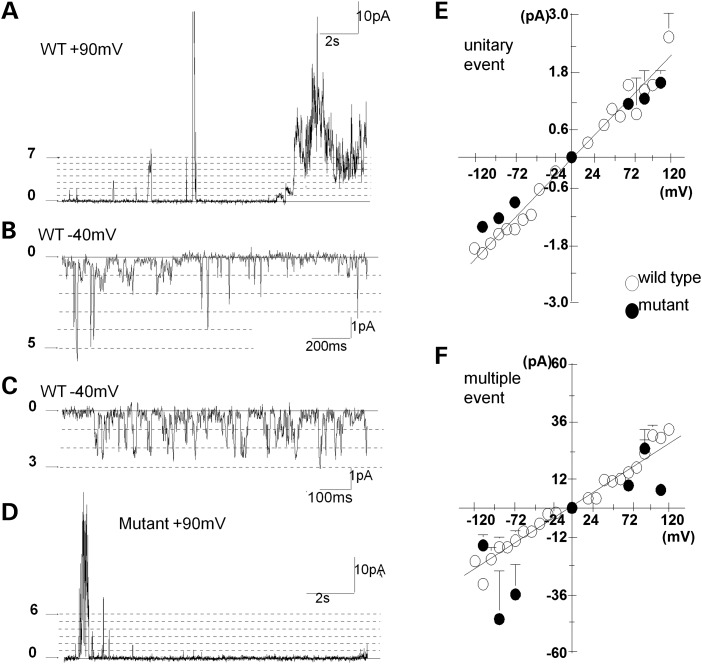Figure 5.
WT and H101Q mutant CLIC2 channel activity recorded at pH 5.0 with 1 mm GSSG. (A–D) Current recordings following the incorporation of CLIC2 channels. The broken lines indicate conductance levels which were multiples of the unitary conductance [∼2 pA at +90 mV in (A) and (D) or ∼1 pA at −40 mV in (B) and (C)]. (A–C) Examples of different gating modes recorded during one experiment in which WT CLIC2 protein was added to the bilayer solution. (A) Continuous 16 s recording in which the channel is initially opening to the unitary conductance or multiples up to 7× the unitary conductance. After ∼8 min, there is a coordinated opening to ∼30× the unitary conductance. Finally, after ∼13 min, a prolonged burst of uncoordinated activity reaching the same maximum levels. (B) Approximately 5 min later in the experiment, periods of opening to levels 1–5 were apparent. (C) After a further 5 min, there were more rapid openings between levels 0 and 3. (D) A recording from a bilayer following incorporation of H101Q mutant CLIC2 channels. The gating is similar to that seen in the WT channel shown in (A). Average current–voltage relationship of unitary events (E) and maximal currents (F) for WT CLIC2 channels (open circles) and H101Q mutant CLIC2 channels (filled circles).

